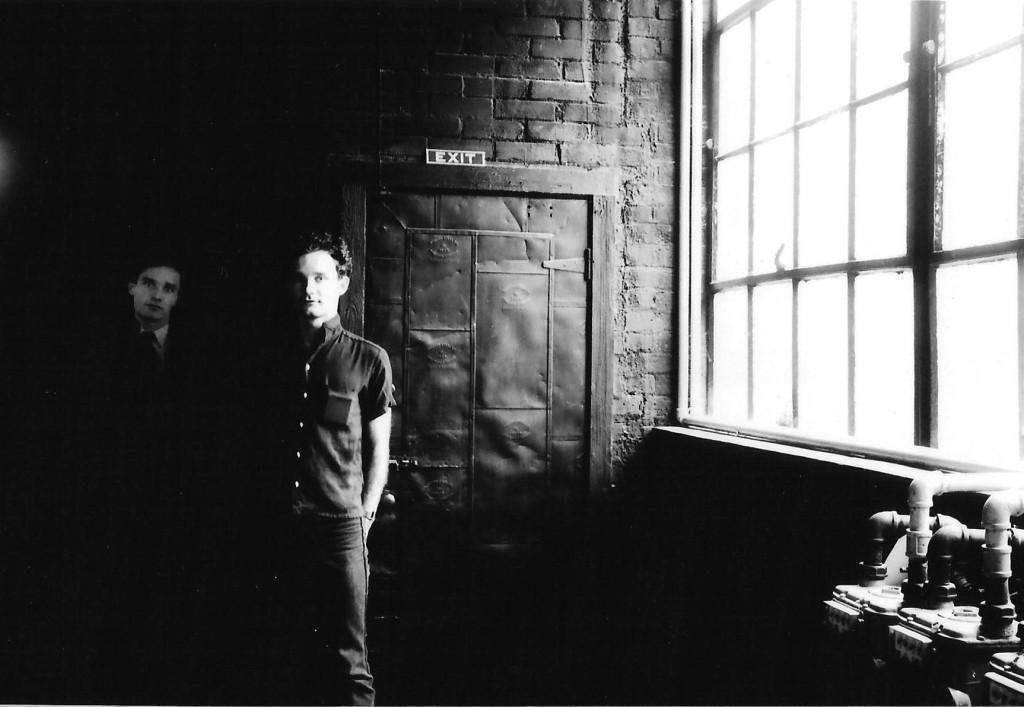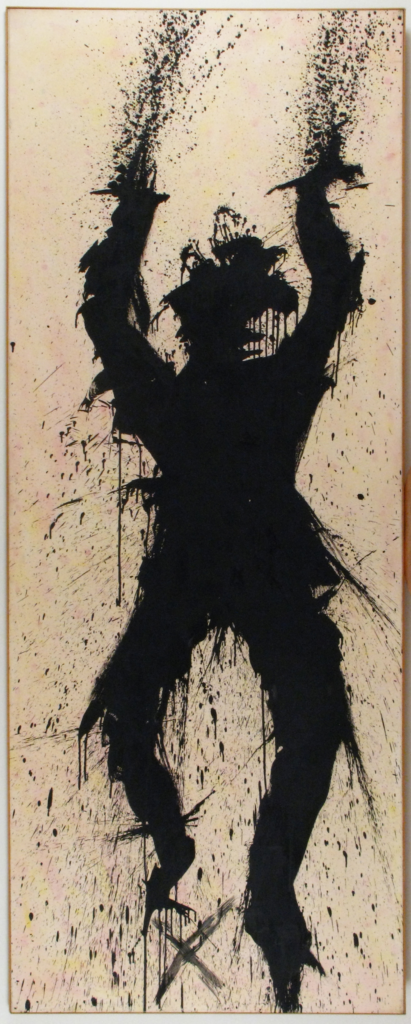Amid Landmark Auction Sales, the Market for Late Street Artist Richard Hambleton Is Booming


Taylor Dafoe

It’s been a big couple of weeks for Richard Hambleton’s market.
On June 26th, the late street artist’s 1983 painting As the world burns sold for $552,000 at Artcurial’s Writing’s On the Wall auction in Paris. The sale nearly quadrupled its $140,000 estimate and smashed Hambleton’s previous auction record of $215,000.
The following day, at artnet’s Urban Art sale on June 27th, an untitled triptych from 1986 went for $216,000—well over the $100,000 to $150,000 estimate. The work was created for the Mauermuseum at Checkpoint Charlie in Berlin. Finished around the same time that Hambleton added his signature Shadowman works to the Berlin Wall, the three-paneled painting features a white line down its center—a symbol for the divisions in Germany at that time. All of this comes in the wake of artnet’s sale of Hambleton’s Jumping Shadow Man painting from 1984, which went for $108,000 (including buyer’s premium) last month.
These are the latest in a recent spate of significant Hambleton sales. His market has seen enormous growth over the last year and a half, precipitated by two major events—the release of a documentary about the artist in spring of 2017, and his untimely death that fall. As of today, nine of Hambleton’s top 10 auction sales have occurred in the last year; the top five have taken place in the last four months.

Richard Hambleton, As the world burns (1983). Courtesy of Artcurial.
Hambleton’s market has always been difficult to summarize. Often referred to as the “godfather of street art” (a title he rejected), the artist was known for his anti-establishment bent. He worked with a number of galleries, but rarely in an official capacity. Even more significant, though, was his long and well-documented battle with heroin addiction—a disease that often hindered his career and ultimately led to his early death.
“The truth is, because he was a junkie, it was hard to get him to conform to what a typical gallery-artist relationship was,” Kristine Woodward tells artnet News. Woodward, who co-owns Woodward Gallery in New York, worked with Hambleton for several decades. She developed a close personal relationship with the artist, helping to provide him with workspaces and supplies, and even taking care of him when he was ill.
“For years and years, we’ve been selling Richard’s work—and selling it for decent amounts of money,” she says. “But Richard was also selling and trading his own work. People would come to his studio and trade paintings in exchange for drugs. A lot of people dangled shiny objects in front of him—and he always went where the money was.”
Hambleton made his name in the downtown New York art world the late 1970s and ’80s. Working alongside friends and fellow artists like Keith Haring and Jean-Michel Basquiat, he emerged as one of the household names of the street art scene, and his work was quickly embraced by galleries and critics. (Legend has it that Basquiat, Haring, and Hambleton would play a game where they would trade each other for their art, and Hambleton would get four Basquiats for one of his works.)
While he made many notable works, Hambleton’s Shadowman paintings—a series of sinister-looking silhouettes splashily painted on the sides of buildings and other locales—garnered him the most notoriety. Eventually, he replicated these figures on canvas and paper—a body of works that proved to be highly salable. But by the early ’90s, Hambleton began to retreat from the art world, objecting to its institutionalism.

Richard Hambleton, Untitled (1986). Courtesy of Woodward Gallery.
“Richard had staying power, but he pissed off a lot of people because he was so nonconforming,” Woodward says. “If he wasn’t so brilliant—if his work wasn’t so genius—I think that a lot of people would have forgotten about him.”
Woodward notes that the gallery still managed to sell a great number of Hambleton’s works during this time. However, his auction numbers were quite small, typically going for just a few thousand—or even a few hundred—dollars.
His habit was also getting worse. In the early 2000s, his art production dropped off significantly, and he became very sick—coming close to death a number of times. Woodward and her husband intervened, providing medical help.
Around 2007, Hambleton experienced a late-career renaissance. A solo show—his first proper exhibition in many years—of his “Beautiful” landscape paintings was mounted at Woodward Gallery and his work began appearing again at auctions, selling for a couple of thousand dollars. In 2009, Giorgio Armani commissioned Hambleton to make a new set of Shadowman works, and the artist was the subject of a retrospective exhibition in New York sponsored by Armani and other patrons.

Richard Hambleton Fountain of Youth I (1982). Photo: Courtesy of Woodward Gallery, NYC.
Hambleton’s commercial market was blossoming. But even then, the artist seemed to undercut his momentum.
“There was an imbalance,” Woodward says. “Our gallery and some other dealers were selling his work privately for tens of thousands of dollars; Richard was selling from the studio for thousands or even hundreds of dollars—whatever he could get.”
His health declined again thereafter. He was diagnosed with skin cancer, as well as scoliosis and kyphosis—all of which was made worse by his continued battle with addiction.
“It got to the point that if you’d mention something about Richard Hambleton to another person, the first thing out of their mouth was, ‘Is he still alive?’” recalls Ghada Dergham, a Florida-based landscape designer and television personality who has become one of Hambleton’s largest collectors. “Given Richard’s reputation, I think the sad truth is that a lot of people were waiting for him to pass away because that’s when whatever they own will be worth so much more.”
Hong Gyu Shin, a New York gallerist who recently purchased Hambleton’s 1983 painting Opening at auction (an auction record for the artist at the time), got to know Hambleton the same way that many people did—as a talented artist who needed help.
“Not long after I opened my gallery in 2013, there was a man who came by with his small bicycle every other evening,” Shin recalls. “He usually showed up around 6:30 p.m. when I was closing. It seemed like he didn’t trust anyone. He hated the art world. He told me that he started street art before Basquiat and Keith Haring. One evening, he came and asked me for a help. ‘Hey Shin, I lost my studio. I don’t have a place to work anymore. I need a studio.’”
Shin invited Hambleton to work in his gallery at night, after it closed. The gallery’s staff took down artworks every night and reinstalled them again in the morning so the artist could work.

Richard Hambleton, Shadow Head Portrait (1988–1990). Courtesy of Woodward Gallery.
Hambleton passed away in October of 2017 at the age of 65. By that time, he was gaunt and frail and cancer had caused half of his face to cave in on itself. In a dark—but fitting—twist, he cast a silhouette that was eerily reminiscent of one of his Shadowman figures.
His market also took off again. Within months, the artist’s paintings at auction went from fetching a couple of thousand dollars to tens of thousands, beginning with the Sotheby’s sale of his 1984 painting Fountain of Youth II, which came in at $150,000. Private sellers report even bigger numbers, with one collector noting that they’ve sold his works for numbers between $500,000 and $1 million.
Indeed, the gap between Hambleton’s auction results and private market figures remains substantial, though the two figures are getting closer.
Dergham believes that gap will close soon. “I think three to five years max,” she says. “Because what’s happening is the collection of people that have been part of Richard’s world—be it collectors or dealers or someone who just bought a piece from him—they’re all seeing the renewed interest in his work.”

Richard Hambleton at the opening of “Richard Hambleton: A Retrospective” at Phillips de Pury & Company in September 2011. Photo: Bennett Raglin/Getty Images.
It’s also difficult, given Hambleton’s habits, to know just how many works he made or how many are in circulation. One collector estimates that there might be a couple thousand works on canvas and many more works on paper—but that’s a loose approximation at best. Nevertheless, Hambleton’s market numbers aren’t expected to go down anytime soon.
“I consider his works as ‘figurative Jackson Pollock,’” Shin says. “I believe he is one of the most important American figurative painters and street artists. I’m confident that his market will keep appreciating. People often compare Richard and Basquiat. Richard is Richard, though I think his market will become as big Basquiat’s, as big as Pollock’s, and as big as de Kooning.”